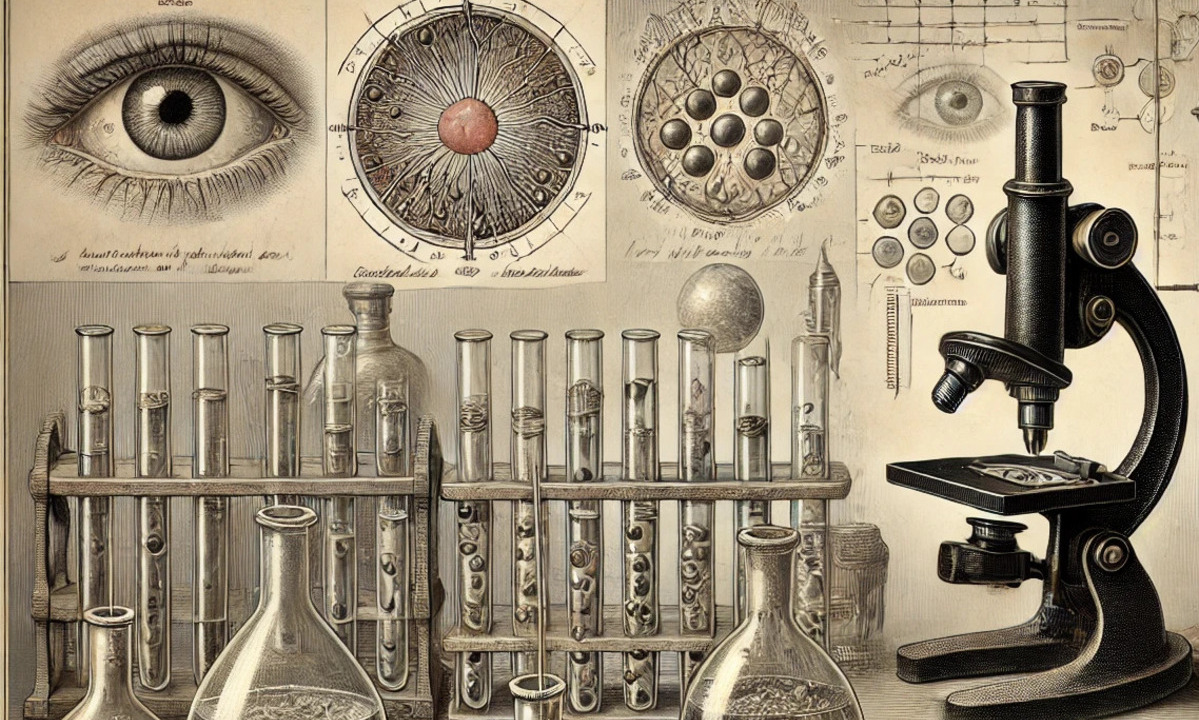Stem Cells: Innovative Therapeutic Approach for Dry AMD
The California Institute for Regenerative Medicine has funded Keck School of Medicine of USC translational research advancing a therapy for dry age-related macular degeneration (AMD). The researchers led by principal investigator Mark Humayun are culturing healthy retinal cells derived from stem cells and harnessing the biological factors they produce to create therapeutic injections.

The California Institute for Regenerative Medicine (CIRM), the state’s stem cell agency, has awarded a two-year, $6 million grant to a team at the USC Dr. Allen and Charlotte Ginsburg Institute for Biomedical Therapeutics and the USC Roski Eye Institute advancing a new treatment for dry AMD. The funding will enable the researchers to conduct preclinical studies needed before launching human trials.
Compounds that are released by stem cell-derived RPE
The investigators aim to accelerate progress in fighting dry AMD, which affects about 16 million people in the U.S. The disease is rooted in damage to the eye’s retinal pigment epithelium (RPE). Treatment options are presently limited to well-established vitamin supplements and newly emerged immune-regulating treatments, both of which can only slow the progression of dry AMD. The USC strategy supported by CIRM takes an entirely different approach — an injection containing a mixture of the restorative, anti-inflammatory and antioxidant compounds that are released by stem cell-derived healthy RPE.
“Nothing that’s currently out there halts or reverses the disease, and many patients end up progressing to blindness,” said principal investigator Mark Humayun, MD, PhD, University Professor of Ophthalmology and Biomedical Engineering and holder of the Keck School of Medicine of USC’s Cornelius J. Pings Chair in Biomedical Sciences. “There’s a need for a new approach. If we can develop this injection and stop disease progression or actually improve vision, that would be amazing from a patient perspective.” Dr. Humayun has devoted much of his career to clinical and scientific research in ophthalmology and bioengineering, becoming both a biomedical engineer and professor of ophthalmology.
Implantable patch of RPE cells
The RPE secretions were derived from another dry AMD treatment developed by Humayun and his colleagues. The original therapy, which will soon enter mid-stage clinical trials, is an implantable patch of RPE cells grown from stem cells that is being commercialized by Regenerative Patch Technologies. When the researchers found that the patch was helping retinal cells far beyond its borders, they started looking into the effects of the fluid released by the patch (i.e., the secretome).
CIRM support, beginning in 2010, enabled the patch to move from preclinical development to clinical trials. Building on that success, CIRM funding then allowed the team to carefully study the promising effects of the RPE secretome, resulting in the new CIRM grant meant to again bridge research from the laboratory to early-stage tests in humans.
The forthcoming research funded by the stem cell agency gains momentum from other steps already taken to fast-track the new treatment for clinical trials. The investigators have had a series of preliminary discussions with the Food and Drug Administration (FDA) and have identified partner testing and manufacturing facilities certified to follow good practices regulated by the FDA.
Intervention at earlier stages of dry AMD
The new therapy is meant for intervention at earlier stages of dry AMD. It may play a complementary role with the patch, which addresses advanced dry AMD. “Essentially, we get two shots on goal from the same product,” Humayun said. “If we’re successful, we can cover patients from A to Z in the continuum of their disease.”
He emphasizes the importance of another key ingredient — cross-disciplinary collaboration. Bioengineers from the USC Viterbi School of Engineering will be vital to the development of the patch, and Humayun will enlist USC Viterbi experts in artificial intelligence to maximize the healing potential of the secretome from stem cell-derived RPE.
“There are so many combinations and permutations for the genetic knobs and levers we can use, it would take forever if you just tried them sequentially,” he said. “The engineering input is critical. AI will help us better understand how to refine and improve this therapy. And as a ‘school of schools,’ USC provides a unique culture and environment for these types of interactions between disparate fields.”
Humayun, a recipient of the National Medal of Technology and Innovation, has already built an uncommon track record of success in improving care through his research. He is the lead inventor of the Argus II — also known as the “artificial retina” or the “bionic eye” — a device that has restored limited vision to hundreds who were previously blind since its FDA approval in 2013.
Source: Keck School of Medicine of USC